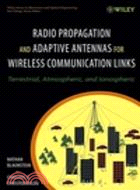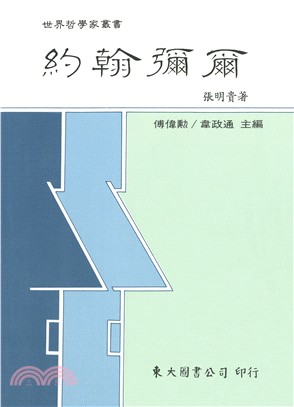RADIO PROPAGATION AND ADAPTIVE ANTENNAS FOR WIRELESS COMMUNICATION LINKS: TERRESTRIAL, ATMOSPHERIC, AND IONOSPHERIC
- ISBN13:9780471251217
- 出版社:全華經銷
- 作者:NATHAN BLAUNSTEIN; CHRISTOS G. CHRISTODODOULOU
- 裝訂/頁數:精裝/614頁
- 規格:24cm*16cm (高/寬)
- 出版日:2007/01/05
定 價:NT$ 1480 元
優惠價:95 折 1406 元
領券後再享88折
領
團購優惠券A
8本以上且滿1500元
再享89折,單本省下155元
再享89折,單本省下155元
領
無庫存,下單後進貨(採購期約4~10個工作天)
可得紅利積點:42 點
相關商品
商品簡介
作者簡介
目次
商品簡介
Antennas and Propogation for Wireless Communication covers the basics of wireless communication system design with emphasis on antennas and propagation. It contains information on antenna fundamentals and the latest developments in smart antennas, as well as the radiation effects of hand-held devices.
Antennas and Propogation for Wireless Communication provides a complete discussion of all the topics important to the design of wireless communication systems. Written by acknowledged authorities in their respective fields, the book deals with practical applications and presents real world examples. A solutions manual for college adopters accompanies the text. Ideal for engineers working in communication, antennas, and propagation for telecomm, military, and aerospace applications, as well as students of electrical engineering, this book covers all topics needed for a complete system design.
Antennas and Propogation for Wireless Communication provides a complete discussion of all the topics important to the design of wireless communication systems. Written by acknowledged authorities in their respective fields, the book deals with practical applications and presents real world examples. A solutions manual for college adopters accompanies the text. Ideal for engineers working in communication, antennas, and propagation for telecomm, military, and aerospace applications, as well as students of electrical engineering, this book covers all topics needed for a complete system design.
作者簡介
Nathan Blaunstein, PhD, DSc, is Professor of the Department of Communication Systems Engineering at the Ben-Gurion University of the Negev, Beer Sheva, Israel. He has published more than 150 articles, six manuals, and six books, and holds five patents in wireless communications, optical and radio, and radars with applications in geophysics and medicine.
Christos G. Christodoulou, PhD, is Professor of the Electrical and Computer Engineering Department at the University of New Mexico, Albuquerque. He has published over 250 articles in journals, conferences, and book chapters; has coauthored three books; and holds three patents. His research interests are in the areas of modeling of electromagnetic systems, reconfigurable systems, machine learning applications in electromagnetics, and smart antennas.
Christos G. Christodoulou, PhD, is Professor of the Electrical and Computer Engineering Department at the University of New Mexico, Albuquerque. He has published over 250 articles in journals, conferences, and book chapters; has coauthored three books; and holds three patents. His research interests are in the areas of modeling of electromagnetic systems, reconfigurable systems, machine learning applications in electromagnetics, and smart antennas.
目次
Preface.
Chapter One: Fundamentals of Radio Communications.
1.1. Radio Communication Link.
1.2. Frequency Band for Radio Communications.
1.3. Noise in Radio Communication Links.
1.4. Main Propagation Characteristics.
1.5. Problems in Adaptive Antennas Application.
Bibliography.
Chapter Two: Antenna Fundamentals.
2.1. Radiation Pattern.
2.2. Field Regions of an Antenna.
2.3. Radiation Intensity.
2.4. Directivity and Gain.
2.5. Polarization.
2.6. Terminal Antennas in Free Space.
2.7. Antenna Types.
Bibliography.
Chapter Three: Fundamentals of Wave Propagation in Random Media.
3.1. Main Wave Equations and Random Functions.
3.2. The Perturbation Method for Multiple Scattering.
The Mean Perturbed Propagator.
The Mean Double Propagator.
Mass Operator and Dyson Equation.
3.3. An Exact Solution of 1D-Equation.
3.4. Approximations of the Perturbation Method.
3.5. Random Taylor Expansion at Short Wavelengths.
3.6. An Exact Solution of the Scalar Wave Equation.
Approximate Evaluations of the Functional Integral (3.137).
3.7. The Electromagnetic Wave Equation.
3.8. Propagation in Statistically Inhomogeneous Media.
3.9. Propagation in Homogeneous Anisotropic Media.
Bibliography.
Chapter Four: Electromagnetic Aspects of Wave Propagation over Terrain.
4.1. Waves Propagation in Free Space.
4.2. Path Loss in Free Space.
4.3. Radio Propagation Above Flat Terrain.
4.4. Propagation Above Rough Terrain Under LOS Conditions.
4.5. Propagation Above a Smooth Curved Terrain.
4.6. Effect of a Single Obstacle Placed on a Flat Terrain.
Bibliography.
Chapter Five: Terrestrial Radio Communications.
5.1. Characterization of the Terrain.
5.2. Propagation Scenarios in Terrestrial Communication Links.
5.3. Propagation over a Flat Terrain in LOS Conditions.
5.4. Propagation over a Hilly Terrain in NLOS Conditions.
5.5. Effect of a Building on the Radio Propagation Channel.
5.6. Propagation in Rural Forest Environments.
5.6.1. A Model of Multiple Scattering in a Forested Area.
5.6.2. Comparison with Other Models.
5.7. Propagation in Mixed Residential Areas.
5.8. Propagation in Urban Environments.
Bibliography.
Chapter Six: Effects of the Troposphere on Radio Propagation.
6.1. Main Propagation Effects of the Troposphere as a Spherical Layered Gaseous Continuum.
6.2. Effects of the Hydrometeors on Radio Propagation in the Troposphere.
6.3. Effects of Tropospheric Turbulences on Radio Propagation.
6.4. Link Budget Design for Tropospheric Communication Links.
Bibliography.
Chapter Seven: Ionospheric Radio Propagation.
7.1. Main Ionospheric Effects on Radio Propagation.
7.2. Effects of the Inhomogeneous Ionosphere on Radio Propagation.
7.3. Back and Forward Scattering of Radio Waves by Small-Scale Ionospheric Inhomogeneities.
Bibliography.
Chapter Eight: Indoor Radio Propagation.
8.1. Main Propagation Processes and Characteristics.
8.2. Modeling of Loss Characteristics in Various Indoor Environments.
8.3. Link Budget Design Verification by Experimental Data.
Bibliography.
Chapter Nine: Adaptive Antennas for Wireless Networks.
9.1. Antenna Arrays.
9.2. Beamforming Techniques.
9.3. Adaptive Antenna for Wireless Communication Applications.
9.4. Network Performance Improvement Using an Antenna Array.
Summary.
Bibliography.
Chapter Ten: Prediction of Signal Distribution in Space, Time and Frequency Domains in Radio Channels for Adaptive Antenna Applications.
10.1. Predicting Models for Indoor Communication Channels.
10.2. Predicting Models for Outdoor Communication Channels.
10.3. Experimental Verification of Signal Power Distribution in Azimuth, Elevation, and Time Delay Domains.
10.4. Signal Power Spectra Distribution in Frequency Shift Domain.
Bibliography.
Chapter Eleven: Multipath Fading Phenomena in Land Wireless Links.
11.1. Prediction of Loss Characteristics for Land Radio Links.
11.2. Link Budget Design for Various Land Environments.
11.3. Characterization of Multipath Radio Channel by Rician Factor.
11.4. Main Algorithm of Radio Coverage (Radio Map) Design.
Bibliography.
Chapter Twelve: Cellular Communication Networks Design Based on Radio Propagation Phenomena.
12.1. Grade of Service (GOS) Design Operating in Multipath Fading Environment.
12.2. Propagation Aspects of Cell Planning.
12.3. Prediction of Parameters of Information Data Stream.
Channel Capacity and Spectral Efficiency.
Relations Between Main Parameters.
Bibliography.
Chapter Thirteen: Prediction of Operational Characteristics of Adaptive Antennas.
13.1. Experimental Verification of Signal Distribution in Azimuth, Time Delay, and Doppler Shift Domains.
13.2. Prediction of Adaptive Antenna Characteristics Based on Unified Stochastic Approach.
Bibliography.
Chapter Fourteen: Land–Satellite Communication Links.
14.1. Objective.
14.2. Type of Signals in Land–Satellite Communication Links.
14.3. Statistical Models.
14.4. Physical–Statistical Models.
14.5. The Unified Algorithm for Fading Phenomena Prediction.
14.6. Mega-Cell Concept for Land Satellite Communication Links.
14.7. "Mega-Cell" Global Networks Design.
Summary.
Bibliography.
Index.
Chapter One: Fundamentals of Radio Communications.
1.1. Radio Communication Link.
1.2. Frequency Band for Radio Communications.
1.3. Noise in Radio Communication Links.
1.4. Main Propagation Characteristics.
1.5. Problems in Adaptive Antennas Application.
Bibliography.
Chapter Two: Antenna Fundamentals.
2.1. Radiation Pattern.
2.2. Field Regions of an Antenna.
2.3. Radiation Intensity.
2.4. Directivity and Gain.
2.5. Polarization.
2.6. Terminal Antennas in Free Space.
2.7. Antenna Types.
Bibliography.
Chapter Three: Fundamentals of Wave Propagation in Random Media.
3.1. Main Wave Equations and Random Functions.
3.2. The Perturbation Method for Multiple Scattering.
The Mean Perturbed Propagator.
The Mean Double Propagator.
Mass Operator and Dyson Equation.
3.3. An Exact Solution of 1D-Equation.
3.4. Approximations of the Perturbation Method.
3.5. Random Taylor Expansion at Short Wavelengths.
3.6. An Exact Solution of the Scalar Wave Equation.
Approximate Evaluations of the Functional Integral (3.137).
3.7. The Electromagnetic Wave Equation.
3.8. Propagation in Statistically Inhomogeneous Media.
3.9. Propagation in Homogeneous Anisotropic Media.
Bibliography.
Chapter Four: Electromagnetic Aspects of Wave Propagation over Terrain.
4.1. Waves Propagation in Free Space.
4.2. Path Loss in Free Space.
4.3. Radio Propagation Above Flat Terrain.
4.4. Propagation Above Rough Terrain Under LOS Conditions.
4.5. Propagation Above a Smooth Curved Terrain.
4.6. Effect of a Single Obstacle Placed on a Flat Terrain.
Bibliography.
Chapter Five: Terrestrial Radio Communications.
5.1. Characterization of the Terrain.
5.2. Propagation Scenarios in Terrestrial Communication Links.
5.3. Propagation over a Flat Terrain in LOS Conditions.
5.4. Propagation over a Hilly Terrain in NLOS Conditions.
5.5. Effect of a Building on the Radio Propagation Channel.
5.6. Propagation in Rural Forest Environments.
5.6.1. A Model of Multiple Scattering in a Forested Area.
5.6.2. Comparison with Other Models.
5.7. Propagation in Mixed Residential Areas.
5.8. Propagation in Urban Environments.
Bibliography.
Chapter Six: Effects of the Troposphere on Radio Propagation.
6.1. Main Propagation Effects of the Troposphere as a Spherical Layered Gaseous Continuum.
6.2. Effects of the Hydrometeors on Radio Propagation in the Troposphere.
6.3. Effects of Tropospheric Turbulences on Radio Propagation.
6.4. Link Budget Design for Tropospheric Communication Links.
Bibliography.
Chapter Seven: Ionospheric Radio Propagation.
7.1. Main Ionospheric Effects on Radio Propagation.
7.2. Effects of the Inhomogeneous Ionosphere on Radio Propagation.
7.3. Back and Forward Scattering of Radio Waves by Small-Scale Ionospheric Inhomogeneities.
Bibliography.
Chapter Eight: Indoor Radio Propagation.
8.1. Main Propagation Processes and Characteristics.
8.2. Modeling of Loss Characteristics in Various Indoor Environments.
8.3. Link Budget Design Verification by Experimental Data.
Bibliography.
Chapter Nine: Adaptive Antennas for Wireless Networks.
9.1. Antenna Arrays.
9.2. Beamforming Techniques.
9.3. Adaptive Antenna for Wireless Communication Applications.
9.4. Network Performance Improvement Using an Antenna Array.
Summary.
Bibliography.
Chapter Ten: Prediction of Signal Distribution in Space, Time and Frequency Domains in Radio Channels for Adaptive Antenna Applications.
10.1. Predicting Models for Indoor Communication Channels.
10.2. Predicting Models for Outdoor Communication Channels.
10.3. Experimental Verification of Signal Power Distribution in Azimuth, Elevation, and Time Delay Domains.
10.4. Signal Power Spectra Distribution in Frequency Shift Domain.
Bibliography.
Chapter Eleven: Multipath Fading Phenomena in Land Wireless Links.
11.1. Prediction of Loss Characteristics for Land Radio Links.
11.2. Link Budget Design for Various Land Environments.
11.3. Characterization of Multipath Radio Channel by Rician Factor.
11.4. Main Algorithm of Radio Coverage (Radio Map) Design.
Bibliography.
Chapter Twelve: Cellular Communication Networks Design Based on Radio Propagation Phenomena.
12.1. Grade of Service (GOS) Design Operating in Multipath Fading Environment.
12.2. Propagation Aspects of Cell Planning.
12.3. Prediction of Parameters of Information Data Stream.
Channel Capacity and Spectral Efficiency.
Relations Between Main Parameters.
Bibliography.
Chapter Thirteen: Prediction of Operational Characteristics of Adaptive Antennas.
13.1. Experimental Verification of Signal Distribution in Azimuth, Time Delay, and Doppler Shift Domains.
13.2. Prediction of Adaptive Antenna Characteristics Based on Unified Stochastic Approach.
Bibliography.
Chapter Fourteen: Land–Satellite Communication Links.
14.1. Objective.
14.2. Type of Signals in Land–Satellite Communication Links.
14.3. Statistical Models.
14.4. Physical–Statistical Models.
14.5. The Unified Algorithm for Fading Phenomena Prediction.
14.6. Mega-Cell Concept for Land Satellite Communication Links.
14.7. "Mega-Cell" Global Networks Design.
Summary.
Bibliography.
Index.
主題書展
更多主題書展
更多書展本週66折
您曾經瀏覽過的商品
購物須知
為了保護您的權益,「三民網路書店」提供會員七日商品鑑賞期(收到商品為起始日)。
若要辦理退貨,請在商品鑑賞期內寄回,且商品必須是全新狀態與完整包裝(商品、附件、發票、隨貨贈品等)否則恕不接受退貨。

























